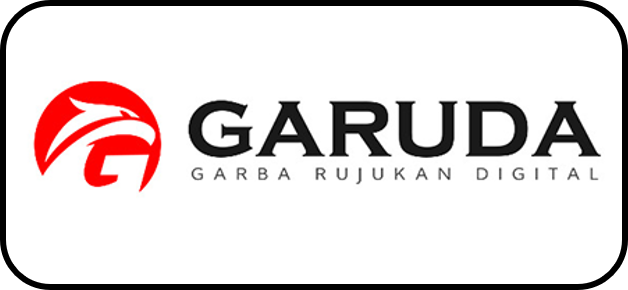Pengaruh Corporate Hedging Terhadap Cost Of Debt
Downloads
The ongoing globalization era is marked by free trade, will bring uncertainty to the Indonesian economy. These uncertainties include fluctuations of exchange rate, interest rates, and commodity prices. This will certainly pose risks, including financial risks that can increase the firm's cost of debt as a risk premium for investors. This study aims to determine the effect of hedging calculated using dummy variable to cost of debt proxies with yield spread. In addition, the bond age, credit rating, leverage, and profitability are used as control variables. The sample which used is manufacturing firm that issues bonds and is listed on the Indonesia Stock Exchange (IDX) for the period 2009-2015. The result of multiple linear regression shows that hedging has a significant negative effect on the cost of debt. Bond age and credit rating have a significant negative effect on cost of debt. Leverage has no significant positive effect on cost of debt. Profitability has no significant negative effect on cost of debt. Hedging lowers cost of debt through decreased bankruptcy costs, agency costs, and information asymmetry. So firms that use hedging will have a lower cost of debt than non-users.
Anderson, Ronald C et al., 2003. Founding Family Ownership and The Agency Cost of Debt. Journal of Financial Economic. 68, 263-285.
Bartram, S.M., Brown, G.W., Conrad, J., 2011. The Effects of Derivatives on Firm Risk and Value. Journal of Finance Quantitative and Analysis. 46, 967-999.
Bodie, Z., Kane, A., Marcus, A. J. 2011. Investments and Portfolio Management: Global Edition. New York: McGraw Hill.
Bodie, Z., Kane, A., Marcus, A. J., Jain, R. 2014. Investments: Asia Global Edition. New York: McGraw Hill.
Campbell, T. S., Kracaw, W. A., 1990. Corporate Risk Management and Incentive Effects of Debt. Journal of Finance. 45, 1673-1686.
Chen, J., King, Tao-Hsien Dolly, 2014. Corporate Hedging and the Cost of Debt. Journal of Corporate Finance. Vol. 29 (2014), 221-245.
Colla, P., Ippolito, F., Li, K., 2013. Debt Specialization. Journal of Finance. 68, 2117-2141.
Cornett, M. M., Adair, T. A., Nofsinger, J. 2012. Finance: Applications and Theory. New York: McGraw Hill.
Corrado, C. J., Jordan, B. D. 2002. Fundamentals of Investments: Valuation and Management. New York: McGraw Hill.
Countiho, Joao Ricardo Ribeiro, Hsia Hua Sheng, Mayra Ivanoff Lora. 2012. The Use of Fx Derivatives and Cost of Capital: Evidence of Brazilian Companies. Emerging Markets Review, Vol. 13 (4), 411-423.
DaDalt, P., Gay, G.D., Nam, J., 2002. Asymmetric Information and Corporate Derivatives Use. J. Futur. Mark. 22, 241–267.
Easley, D., O'Hara, M., 2004. Information and the Cost of Capital. Journal of Finance. 59, 1553-1583.
Faizah, YLN., Suyono, E., Ramadhanti W., 2015. Pengaruh Profitabilitas, Likuiditas, Size dan Leverage Perusahaan terhadap Yield Obligasi Dengan Peringkat Obligasi Sebagai Variabel Intervening. Universitas Jenderal Soedirman.
Froot, K., Scharfstein, D., Stein, J., 1993. Risk Management: Coordinating Investment and Financing Policies. Journal of Finance. 48, 1629-1658.
Gay, G. D, Lin, C., Smith, S. D., 2011. Corporate Derivatives Use and the Cost of Equity. Journal of Bank and Finance. 35, 1491-1506.
Ghazali, Imam. 2005. Aplikasi Analisis Multivariate dengan Program SPSS. Semarang: Universitas Diponegoro.
Hanafi, Mamduh M. 2006. Manajemen Risiko. Yogyakarta: UNIT PENERBIT DAN PERCETAKAN SEKOLAH TINGGI ILMU MANAJEMEN YKPN.
Hartono, Jogiyanto. 2014. Teori Portofolio dan Analisis Investasi, Edisi Kesembilan. Yogyakarta: BPFE-Yogyakarta.
Howton, S., Perfect, S., 1998. Currency and Interest-rate Derivatives Use in US Firms. Finance Management. 27, 111-121.
Hull, John C. 1993. Options, Futures, and Other Derivative Securities. Englewood Cliffs, New Jersey: Prentice-Hall International, Inc.
Johansyah, Difi A. Oktober, 2013. Gerai Info Bank Indonesia, Edisi 43. hlm.2
Jordan, B. D., Miller, T. W., Dolvin, S. D. 2012. Fundamentals of Investments: Valuation and Management. New York: McGraw Hill.
Klock, M.S., Mansi, S.A., Maxwell, W.F., 2005. Does Corporate Governance Matter to Bondholders?. Journal of Finance Quantitative and Analysis. 40, 693-719.
Madura, Jeff. 2003. Financial Markets and Institutions, Sixth Edition. United States of America: Thomson South-Western.
Mayers, D., Smith, C., 1982. On the Corporate Demand for Insurance. Journal of Business. 55, 281-296.
McDonald, Robert L. 2009. Fundamentals of Derivatives Markets. New York: Pearson Education, Inc.
Ross, Stephen A. dkk. 2008. Corporate Finance Fundamentals. Singapore: The McGraw-Hill Companies, Inc.
Santoso, Singgih. 2000. Buku Latihan SPSS Statistik Parametrik. Jakarta: PT. Elex Media Komputindo.
Sudana, I Made. 2011. Manajemen Keuangan Perusahaan, Teori dan Praktik. Jakarta: Penerbit Erlangga.
Sudiyatno, B., Irsad, M. 2011. Menguji Model Tiga Faktor Fama dan French dalam Mempengaruhi Return Saham: Studi pada Saham LQ45 di Bursa Efek Indonesia. Jurnal Bisnis dan Ekonomi. 18, 126-136.
Sundjaja, R. S., Barlian, I. 2003. Manajemen Keuangan 2. Jakarta: Literata Lintas Media.
Utomo, Lisa Linawati. 2000. Instrumen Derivatif: Pengenalan dalam Strategi Manajemen Risiko Perusahaan. Jurnal Akuntansi dan Keuangan. Vol. 2 No. 1, 53-68.
Weston J. F., Brigham, E. F.1985. Dasar-dasar Manajemen Keuangan Jilid 1, Diterjemahkan oleh Khalid, A. Q. Bandung: PT. Gelora Aksara Pratama.
Wirartha, Made I. 2006. Metodologi Penelitian Sosial Ekonomi. Yogyakarta: CV. Andi Offset.
Ziebart, David A dan Reiter, Sara A. 1992. Bond Ratings, Bond Yields and Financial Information. Contemporary Accounting Research, 9 (1), pp:252- 282.
Authors who publish with this journal agree to the following terms:
1. The author(s) hold the copyright of the article without restrictions.
2. The author(s) retain publishing rights without restrictions
3. The legal formal aspect of journal publication accessibility refers to Creative Commons Attribution (CC BY).
















